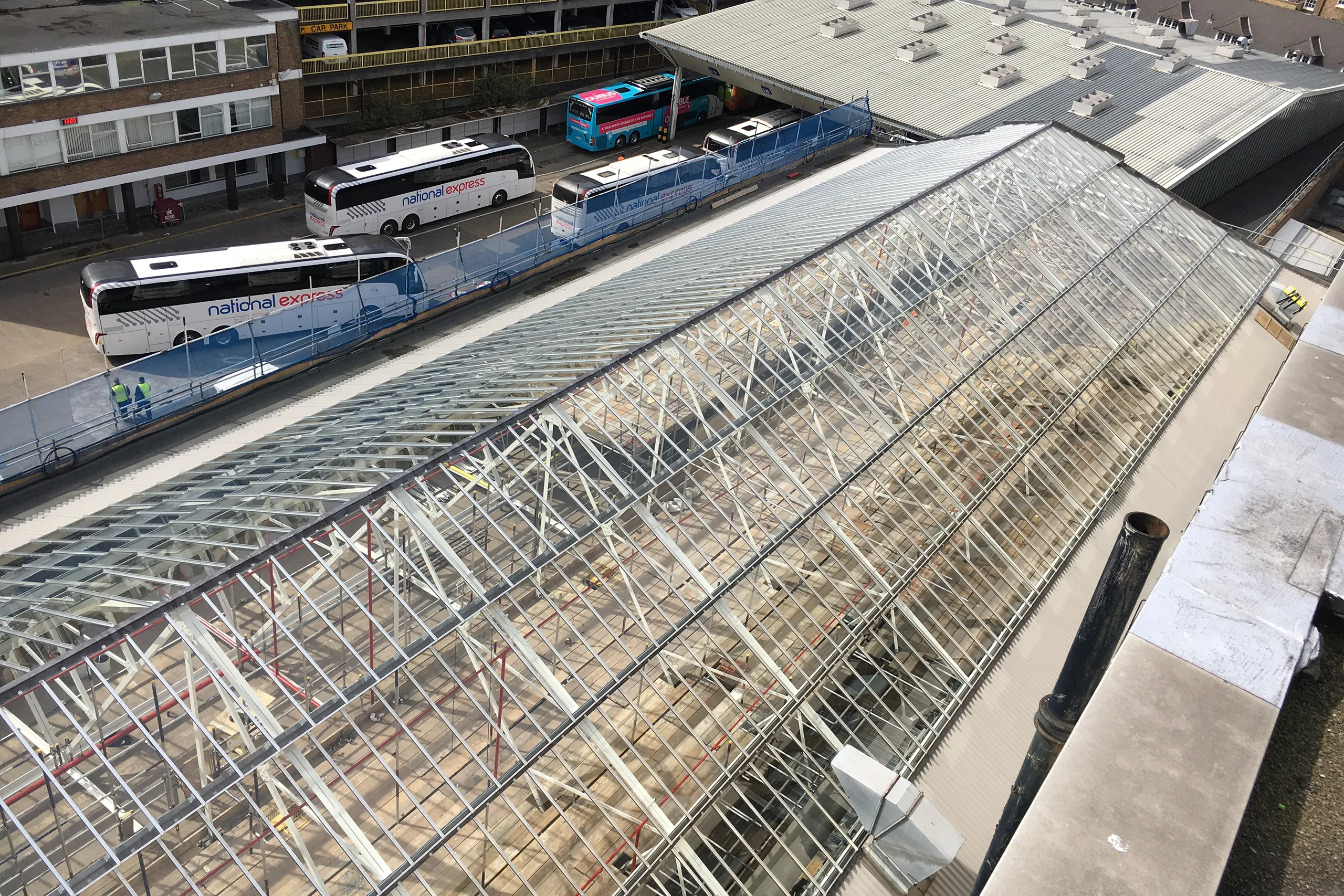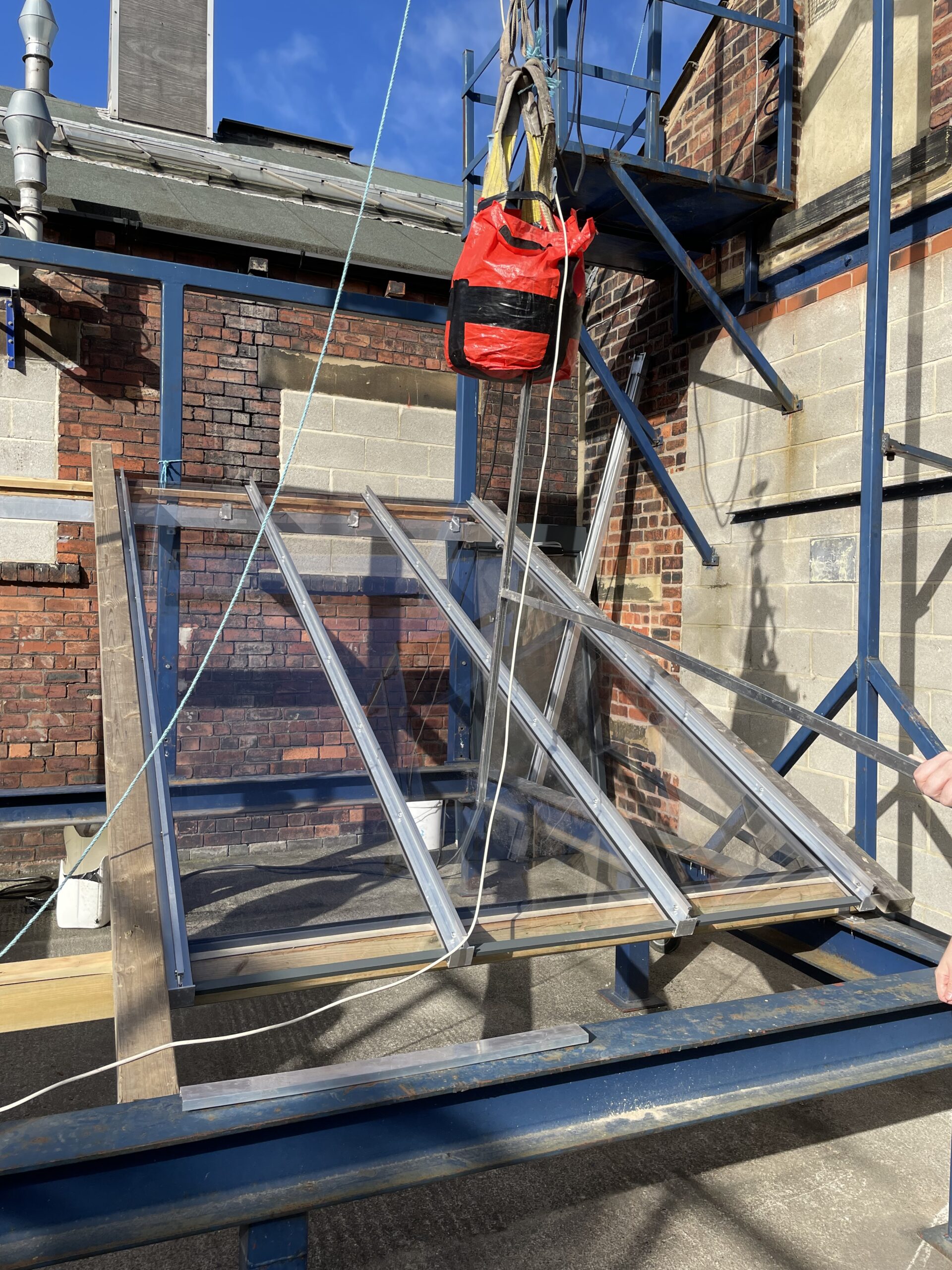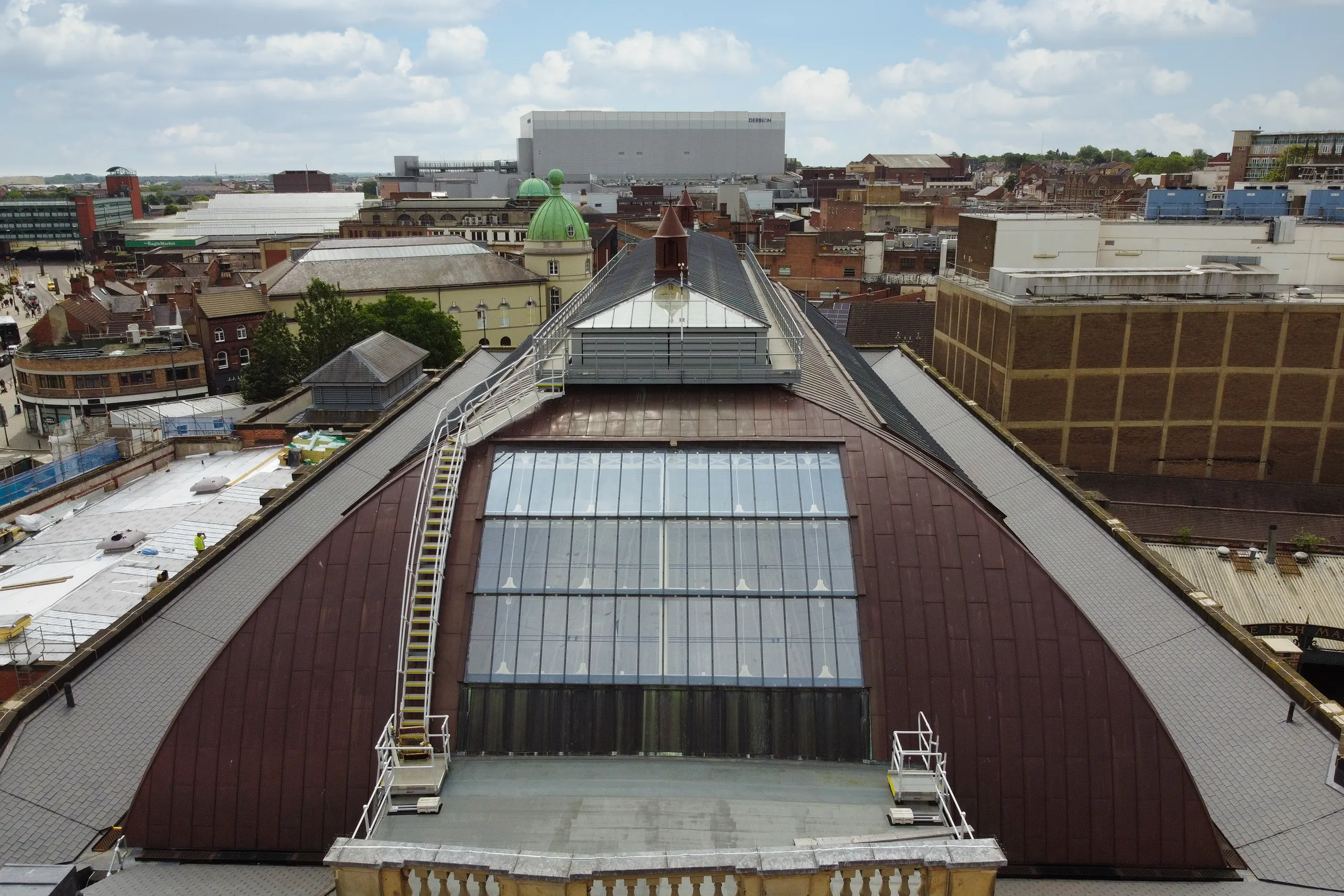Safety Requirements for Glass in Sloping Patent Glazing
Public Safety & Non-Fragility


Safety First
In sloping patent glazing situations, it is a requirement to install glass which will either tend to stay in place if it is cracked (laminated safety glass fall into this category) or to fracture into relatively harmless pieces (toughened safety glass falls into this category) which are less likely to cause serious injury, if they fall, rather than sharp shards of annealed glass.
BS 5516: 2004 Code of practice for vertical and sloping patent glazing, CWCT TN112 and BS6262:2018 are the regulatory and or guidance documents which give recommendations about the type of glass to use in roofs.
For single glazing, laminated or toughened glass is recommended by BS 5516, while double glazed units should have safety glass as the lower pane.
With regard to toughened glass, BS 5516 suggests that, if the lower pane of a double glazed unit is toughened, then the upper pane should also be a safety glass.
Glass Type
Suitable glass type for height of roof glazing from floor level
Height from floor |
Single glazing |
Double and triple glazing |
|---|---|---|
0-5m (A) |
(A) Toughened Glass or Laminated Glass |
(A) The lower pane should be Toughened or Laminated. If the lower pane is toughened glass then the upper pane should be Toughened also. * |
>5m (B) |
(B) Toughened Glass with Safety Film, Laminated or Heat Strengthened Laminated Glass |
(B) The lower pane should be Toughened with Safety Film, Laminated or Heat Strengthened Laminated glass. If the lower pane is toughened glass then the upper pane should be Toughened. * |
PLEASE NOTE: Wired glass should not be used in roof glazing applications, as it no longer meets the safety standards specified by BS EN 12600.
Additionally, toughened laminated glass is unsuitable for roof glazing applications, as detailed in CWCT TN112. While toughened glass is designed to break into small, dice-like pieces upon impact, in a laminated situation, these pieces remain attached to the PVB interlayer. This can result in the entire sheet sagging and potentially falling as a large, dangerous piece, posing a serious risk of injury
For more information and guidance on alternatives please contact us
Note that toughened glass should not be used as single glazing or as a lower pane in double or triple glazed units over swimming pools, where fragments of broken glass can enter the pool pumps and cause serious damage.
Annealed laminated glass should never be used when close fitting blinds are installed directly below the roof glazing. Toughened glass with an optional factory applied safety film is a suitable alternative or a more expensive heat strengthened laminated glass.
Glass Thickness
Recommendations For Glass Used In Sloping Patent Glazing
Glass in sloping patent glazing throughout its long history has generally been installed at a thickness of 6mm. This is still by far the most common thickness used on all patent glazing projects and patent glazing’s excellent safety record shows that a 6mm glass is both safe and practical when concerned with public safety. If you need to consider the safety of people working on the roofs then you may wish to consider using a thicker glass to help reduce the risk of falling through the glass or designing barriers to prevent people being able to fall onto the glass from a higher roof level.
Due to the relatively narrow widths of glass used in patent glazing, there is generally no need to use a glass thicker than 6mm to withstand all the usual loadings that the glass is likely to be subjected to patent glazing is predominantly situated in a sloping situation, therefore in the event of a glass breakage and depending on the location, consideration may need to be given to the protection of the public below from falling glass.
As shown on the table above, toughened glass as a stand alone product should not be used in sloping glazing as an inner pane if the height is over 5 metres from floor level because the broken glass pieces (dice), falling from such a height, have a greater chance of causing injury to people below than from a lower height. In this instance the inner pane should consist of toughened glass with applied safety film, annealed laminated glass or heat strengthened laminated glass to reduce the likelihood from falling into the building in the event of a breakage.

Non-Fragility and Patent Glazing
The British Standards for glass safety, BS6262 Part 4 provides guidance on the use of suitable safety glass as outlined in the table above. This standard along with BS5516 and CWCT TN112 are concerned solely with protecting the public from injury in the case of glass breakages and failures from roof glazing.
In the last few years a greater amount of emphasis has been placed on the protection of people who are actually carrying out work on roofs. Every year there are preventable deaths occurring on buildings due to people falling through fragile roofing materials. Several of these accidents are associated with in-plane plastic/polycarbonate type rooflights which have been walked on accidentally resulting in the person falling through the roof. Other accidents are due to people falling from a higher roof level onto fragile material on a lower roof level.
It would be very difficult for a person to accidentally walk onto a roof patent glazing system by mistake. Also, if there is a possibility of a person falling onto a roof patent glazing system from a higher roof level then the building designer would ensure that barriers are placed at the edges of the higher roof level to prevent this from ever happening. Patent glazing continues to have an excellent safety record for these very reasons.
Two separate non-fragility tests for roofing materials have been developed independently of each other. The Advisory Committee for Roof Work have published a document titled ACR[M]001:2014 test for non-fragility of large element roofing assemblies. 5th edition (red book). Another non-fragility test has been devised by The Centre for Window and Cladding Technology titled TN 67 Safety and Fragility of Overhead Glazing: Testing and Assessment.
These tests have been developed over recent years in an attempt to reduce the number of deaths and injuries associated with people falling through fragile roofing materials. An ever increasing number of architects are choosing to specify that patent glazing systems should be used which have been classified as non-fragile by one or both of the above mentioned test criteria(s).
We have had several of our patent glazing systems officially tested for non-fragility compliance by independent testing bodies and are pleased to report that our systems perform admirably and have all been rated as non-fragile assemblies. Due to the fluid changes that are constantly occurring in the non-fragility testing field we found it necessary to commission the design and installation of our own steel framed test rig at our premises in Dewsbury to enable us to carry out multiple tests of our patent glazing systems when the need arises. Due to the flexible nature of patent glazing designs there are a multitude of combinations that require test based results which are governed by span, glazing bar centres, slope of glazing, glass type and glazing system.
We have carried out many tests and can state that all of our patent glazing systems can achieve a non-fragile rating in accordance with the ACRM test and the CWCT test if the patent glazing is installed at any pitch with a 3 metre maximum span , a maximum glazing pane width of 750mm and a laminated glass type of at least 8.8mm thick. For double glazed tests we have used outer panes of 6mm thick toughened glass with a 8.8mm laminated inner pane. It is possible to achieve a non-fragile rating using thinner glass types under certain conditions but we would suggest that these are not generally considered if you are seriously considering using robust materials.